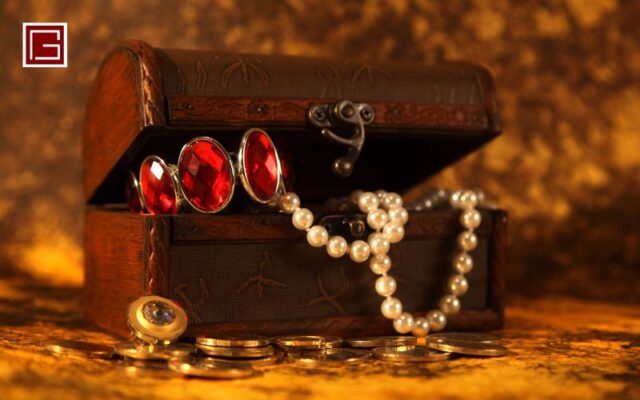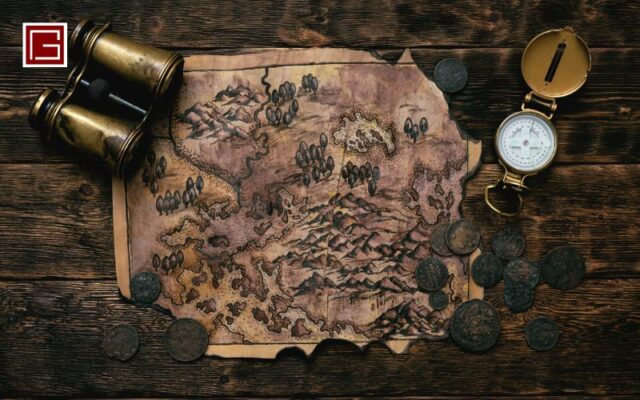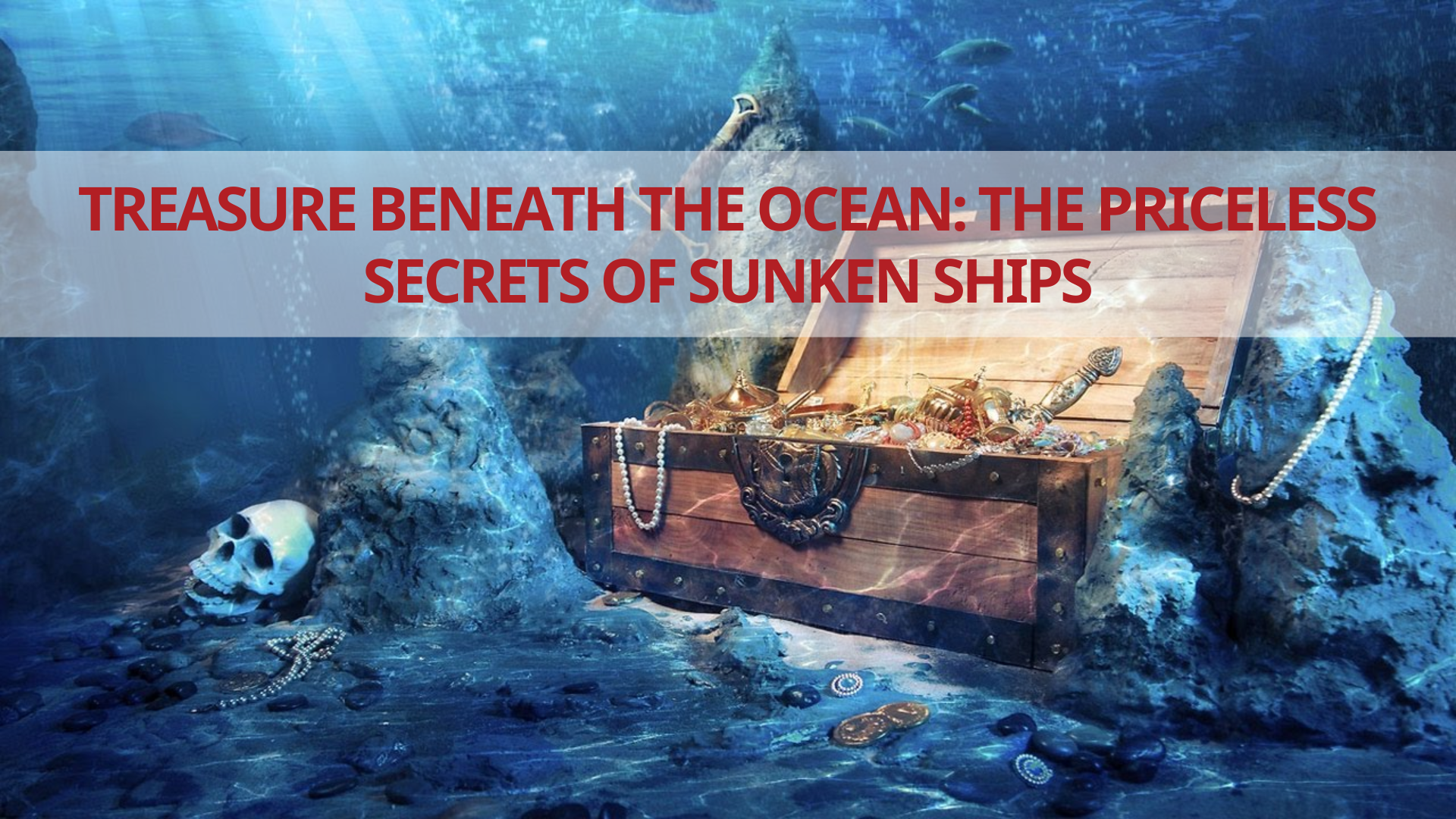BLog New
Treasure Beneath the Ocean: The Priceless Secrets of Sunken Ships
CONTENTS
- 1 Treasures of the Deep: Priceless Wealth from Sunken Ships
- 2 What Lies Beneath: Types of Sunken Treasure
- 3 The Value of Sunken Treasures – Why Are They Considered Priceless?
- 4 Why Did So Many Pirates Hunt for Sunken Treasure?
- 5 Who Owns the Treasure Beneath the Ocean?
- 6 Real-World Disputes
- 7 The Future of Underwater Treasure – Do We Need Clearer International Laws?
Treasures of the Deep: Priceless Wealth from Sunken Ships
For centuries, the ocean’s depths have concealed countless treasures from shipwrecks — including gold and silver coins, jewelry, artifacts, and other rare valuables. These underwater troves are valuable not only for their material worth but also for their immense historical and cultural significance. They’ve inspired generations of treasure hunters, daring pirates, and bold explorers. Let’s dive into the types of treasures hidden beneath the waves, their value, and why they continue to spark such fascination.
What Lies Beneath: Types of Sunken Treasure
Sunken treasures are rich and varied, originating from ships lost throughout the ages. Some of the most common types include:
Gold and Silver:
Many trading ships from powerful empires such as Spain, Portugal, and Britain carried large quantities of gold and silver from their colonies back to Europe. These ships often sank due to harsh weather, enemy attacks, or collisions with reefs. When discovered, their treasure can be worth hundreds of millions—or even billions—of US dollars.
Jewels and Precious Stones:
Beyond precious metals, many vessels also transported luxurious jewelry and gems destined for nobility and royalty. One of the most famous examples is the Spanish galleon Nuestra Señora de Atocha, which sank in 1622 while carrying an enormous cache of emeralds and gold — valued today at hundreds of millions of dollars.

Ceramics, Statues, and Artworks:
Many ships from China and other Asian countries carried valuable porcelain, intricately crafted artworks, and rare collectibles intended for international trade. These items can fetch millions at auctions due to their uniqueness and historical significance.
Weapons and Military Artifacts:
Warships that sank during naval conflicts often contained cannons, swords, and military equipment. While not as monetarily valuable as gold or silver, such artifacts are vital for studying the military history and technology of the period.
Historical Documents and Maps:
Some shipwrecks preserved ancient letters, logs, and navigational maps. These documents are priceless for historians, offering deeper insight into past cultures, exploration, and geopolitical landscapes.
The Value of Sunken Treasures – Why Are They Considered Priceless?
The value of underwater treasures goes far beyond precious metals. Their worth lies in rarity, cultural heritage, and their contribution to our understanding of history. For instance:
-
The Nuestra Señora de las Mercedes was found to carry a treasure worth around $500 million USD.
-
The San José, a Spanish galleon sunk in the 18th century, is believed to contain treasure valued at up to $17 billion USD, including gold and silver coins from South American colonies.
These treasures not only hold enormous financial worth but also help piece together important maritime, trade, and colonial histories.
Why Did So Many Pirates Hunt for Sunken Treasure?
Pirates and explorers have long been drawn to the lure of ocean treasures for several reasons:
1. Immense Wealth and Quick Riches:
Merchant ships historically carried massive fortunes, making them prime targets. A single treasure-laden vessel could make a pirate crew instantly wealthy. Pirates like Blackbeard and Henry Morgan became infamous for targeting these ships traveling between the Americas and Europe.
2. Power and Prestige:
For many pirates, seizing treasure wasn’t just about wealth — it was about dominance. Controlling valuable loot enhanced their ability to recruit followers, build fleets, and exert influence across the seas.
3. Myths and the Allure of Mystery:
Legends of cursed gold, undiscovered shipwrecks, and lost fortunes continue to fuel curiosity. Pirates were willing to face danger in pursuit of fabled riches — like the treasure of the Flor de la Mar, said to be filled with gold and valuables, lost off the coast of Malacca.

Who Owns the Treasure Beneath the Ocean?
Ownership of underwater treasure depends on several factors, including the location where it was found, the nationality of the ship, and the legal regulations of each country. Here are the key factors that determine who owns oceanic treasure:
1. Location of Discovery – National Territorial Waters
If a shipwreck or treasure is found within the territorial waters of a country, it typically belongs to that nation according to the United Nations Convention on the Law of the Sea (UNCLOS). This means that all discovered artifacts fall under the ownership of the government, regardless of who found them.
2. International Waters – First Finder Rules?
In international waters, the laws become more complex. The UNESCO Convention on the Protection of the Underwater Cultural Heritage states that such treasure is cultural heritage and cannot be freely claimed. Discoverers must comply with international regulations.
However, some countries permit discoverers to recover treasures but require them to report and share findings with the relevant governments or international bodies to protect historical value.
3. Historical Significance and Preservation
Many sunken treasures carry immense historical value—such as ancient wrecks or wartime relics. In such cases, these are considered not just valuable assets but cultural heritage of humanity. Hence, many countries and global organizations argue that these treasures should be preserved, not exploited.
Real-World Disputes
Several high-profile discoveries have led to international ownership disputes, such as:
-
The Nuestra Señora de las Mercedes (Spain): This Spanish ship carrying millions in gold and silver was discovered in the Atlantic. After a lengthy legal battle, it was ruled that the treasure belonged to Spain as the ship was a national historical artifact—not the company that found it.
-
Odyssey Marine Exploration: This treasure-hunting company has faced numerous lawsuits over ownership of discovered wrecks, often clashing with countries that claimed the treasures as state property.
The Future of Underwater Treasure – Do We Need Clearer International Laws?
Although some conventions exist regarding ownership and protection of underwater treasure, the legal framework remains vague, leading to ongoing disputes. Advances in deep-sea exploration and technology have unlocked new possibilities, but they also highlight the need for stricter, clearer rules to ensure the preservation of underwater heritage.
Underwater treasures are not merely precious assets—they hold stories, culture, and spiritual significance. So, who truly owns oceanic treasure? It depends on legal statutes, the site of discovery, and international treaties.
We hope this article has satisfied your curiosity about the fascinating world of ships. If you’re inspired by these engineering marvels and want to bring a piece of that maritime magic into your own space, don’t hesitate to visit the Gia Nhien’s showroom. With a collection of over 1,000 handcrafted wooden ship and boat models, each piece is meticulously made from natural wood by skilled artisans, capturing the elegance, detail, and heritage of real vessels.
These exquisite models are not only a celebration of fine craftsmanship but also the perfect addition to elevate your home or office decor with a touch of nautical charm.
👉 Explore the full collection of model ships here: https://woodenmodelships.net/shop/
And don’t forget to follow the Gia Nhien Wooden Ship Models Blog for more captivating stories and knowledge from the maritime world!

